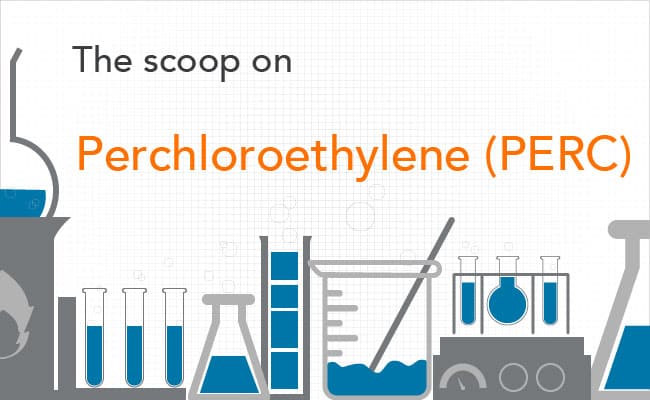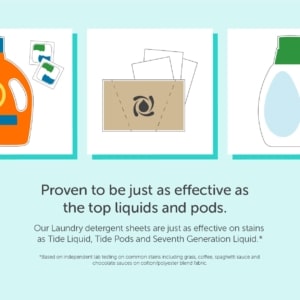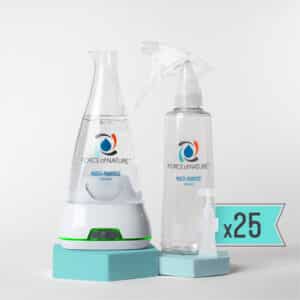
What is perchloroethylene or “perc”?
Perchloroethylene or “Perc” is a colorless, noncombustible, volatile organic compound (VOC) typically found in liquid form [2] [3]. The compound turns into vapors at room temperature [3].
What is perchloroethylene in?
Typewriter correction fluid, spot removers, shoe polish, and wood cleaner often contain Perc [3]. It is used prolifically in dry cleaning and as a solvent in metalworking factories as well as the automotive industry [1]. Perc is also a common groundwater and soil contaminant [1]. Most human contact occurs via bagged dry-cleaning items that are unwrapped in the home, releasing unhealthy amounts of the chemical into indoor air [3].
How to tell if a product has perchloroethylene
Perchloroethylene is also known sometimes listed as “Perc”, tetrachloroethylene, or tetrachlorethylene [3].
Risks associated with perchloroethylene
Even a minor exposure to perchloroethylene can cause irritation to the eyes, skin, respiratory system along with a variety of other unpleasant symptoms including nausea, flushing, dizziness, and headache [2] [3]. Over time, this chemical has been shown to cause more serious health issues including:
- Cancer
- Organ system toxicity
- Neurotoxicity
- Cardiac issues
- Kidney problems
- Reproductive toxicity [1][3]
How to avoid perchloroethylene
Don’t dry clean your clothes if at all possible. Instead, use toxic chemical free “wet cleaners” that use special non-toxic ingredients along with water or CO2 cleaners that use high-pressure carbon dioxide to launder clothes. Avoid so-called “perc-free” dry cleaners that claim to use organic products. Often, these operations simply substitute other toxic ingredients for perc” [3]. Read ingredient labels and always avoid products like chemical spot removers or polishes that contain perc. Choose natural formulas instead that use safer ingredients like enzymes [3].
References:
[1] EWG (2007-2011). National Drinking Water Database. Available online: http://www.ewg.org/tap-water/chemical-contaminants/Tetrachloroethylene/2987/ December 6, 2016.
[2] CDC (2016). Tetrachloroethylene. Available online: http://www.cdc.gov/niosh/npg/npgd0599.html December 7, 2016.
[3] Healthy Child Healthy World. (2013). Keep PERC out of Your Home. Available online: http://www.healthychild.org/easy-steps/keep-perc-out-of-your-home/ December 7, 2016.



